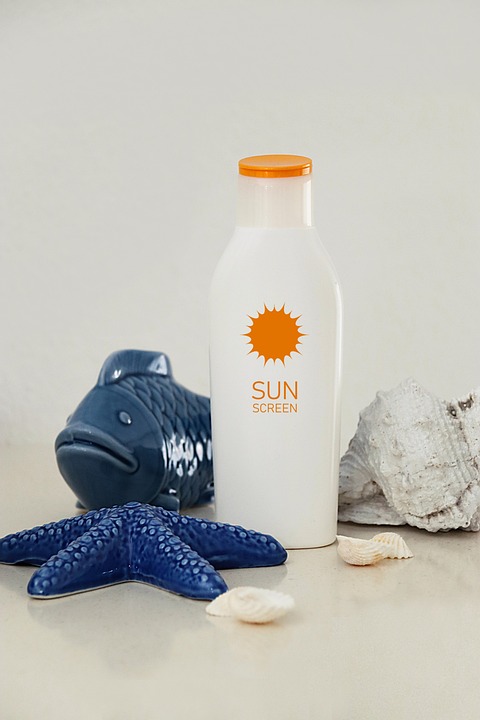As the sun’s rays become more inviting, and the call of the beach grows louder, it’s critical to arm yourself with the best defense against sun damage: sunscreen. Protecting your skin not only prevents painful sunburns but also significantly reduces the risk of long-term skin damage, including premature aging and skin cancer. Before you dive into the waves, here’s what you need to know about sunscreen safety.
Why Sunscreen Matters
Every time you expose your skin to sunlight, UV radiation can cause damage. There are two types of harmful UV rays to be aware of:
- UVA Rays: These rays penetrate deeply into the skin and can cause long-term skin damage, leading to premature aging and some types of skin cancer.
- UVB Rays: These rays primarily affect the surface of the skin, causing sunburn. They are also pivotal in the development of skin cancer.
Sunscreen acts as a barrier, absorbing or reflecting these harmful rays, thus protecting your skin. It doesn’t just prevent burns; regular use can lower your risk of skin cancer and maintain skin health over time.
Understanding SPF
SPF, or Sun Protection Factor, is a measure of how well a sunscreen can protect your skin from UVB rays. Here’s how to interpret SPF:
- SPF 15: Blocks about 93% of UVB rays.
- SPF 30: Blocks about 97% of UVB rays.
- SPF 50: Blocks about 98% of UVB rays.
While higher numbers offer slightly more protection, no sunscreen can block 100% of UV rays. Dermatologists generally recommend using a broad-spectrum sunscreen with at least SPF 30 for effective protection.
Choosing the Right Sunscreen
When selecting a sunscreen, look for products labeled as "broad-spectrum," which means they protect against both UVA and UVB rays. Additionally, consider the following factors:
-
Water Resistance: If you plan to swim or sweat, choose a water-resistant sunscreen that lasts for 40 to 80 minutes while wet.
-
Formulation: Sunscreens come in various forms, including lotions, creams, gels, sprays, and sticks. Generally, creams provide the most consistent coverage, but finding one you enjoy using is essential for regular application.
-
Skin Type: Individuals with oily skin may prefer gel-based sunscreens, while those with dry skin might opt for creams with moisturizing properties.
- Ingredients: Some prefer mineral sunscreens containing zinc oxide or titanium dioxide, which physically block UV rays. Others might choose chemical sunscreens containing avobenzone or octinoxate. Know your skin sensitivity and preferences.
Application Tips for Maximum Protection
Applying sunscreen correctly is crucial for effective protection. Here are some application tips to keep in mind:
-
Apply Generously: Use about one ounce (a shot glass full) to cover your entire body. Don’t forget often-missed areas like the ears, back of the neck, and the tops of feet.
-
Timing is Key: Apply sunscreen 15-30 minutes before sun exposure to allow your skin to absorb it properly.
-
Reapply Frequently: Sunscreen should be reapplied every two hours, or immediately after swimming, sweating, or towel drying. Even water-resistant sunscreens need this touch-up.
- Layer Up: If you’re using other products like moisturizer or makeup, apply sunscreen last and allow it to dry completely.
Sunscreen Myths Debunked
There are common misconceptions about sunscreen that can lead to inadequate protection:
-
Myth: Sunscreen is only needed on sunny days.
- Fact: UV rays can penetrate clouds, so wearing sunscreen even on overcast days is important.
-
Myth: Darker skin doesn’t need sunscreen.
- Fact: While darker skin has more melanin which offers some protection, it’s still at risk for skin damage and cancer. Everyone needs sunscreen.
- Myth: Spray sunscreen is sufficient.
- Fact: Spray sunscreens can be tricky to apply evenly. Consider using them as a supplementary layer, and always rub them in for even coverage.
When to Seek Shade
Sunscreen is essential, but it’s just one part of sun safety. Whenever possible, seek shade, especially during midday hours (10 a.m. to 4 p.m.), when UV radiation is at its peak. Wearing protective clothing, hats, and sunglasses can enhance your safety.
Conclusion
Before you hit the beach, arm yourself with knowledge about sunscreen safety and make it a part of your routine. By understanding the importance of sunscreen, choosing the right one for your skin type, and applying it correctly, you can enjoy the sun while minimizing the risk of sun damage. So grab your sunscreen, stay safe, and soak in the sun responsibly!
